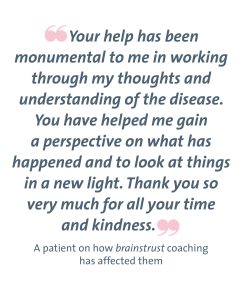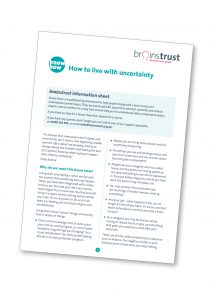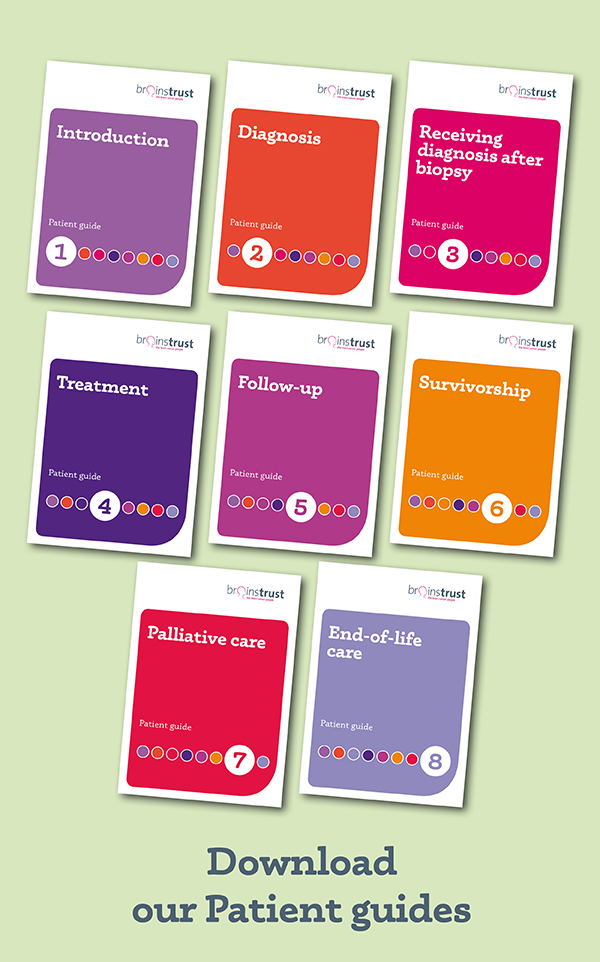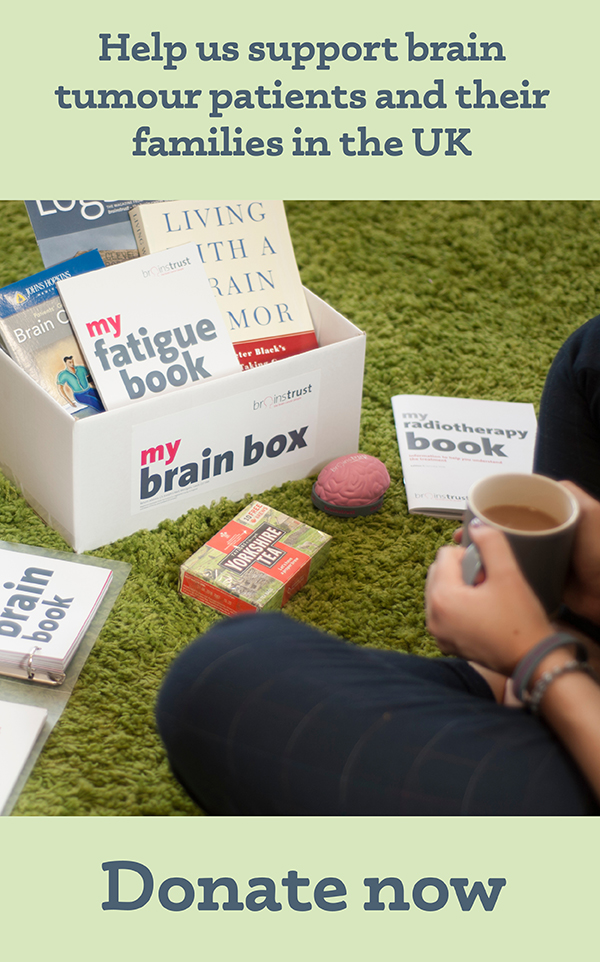Feel on top of things as a caregiver
Becoming a caregiver for someone with a brain tumour can happen abruptly or creep in slowly unnoticed until one day you realise you are caring more for someone else than you are for yourself. Here you will find tips and information on how to look after yourself and create the space you need through this unexpected journey you find yourself on.
On this page you will find:
Self Care
As a caregiver, you may often feel like life is focused on your role of caring for someone with a brain tumour diagnosis. It may seem like there is no time to do things that you enjoy or you may feel like you don’t have any time to yourself.
Setting aside some time in your day to do something for yourself will give you some space from your caring role and bring some pleasure into your life.
“Self-care is how you take your power back.”– Lalah Delia
Make yourself a list of things that you enjoy. Maybe these are things that you used to do regularly before the brain tumour diagnosis. These can be things that you can do alone or with your loved one as well.
Below are some of our suggestions to help get you started. Keep your list somewhere you can find it easily and try and tick off at least one a day.
| Walk the dog | Bake a cake | Organise a cupboard | Do an exercise class |
| Have a bath | Meet a friend | Read a book | Treat yourself to something new |
| Watch a film | Go out for dinner or get a takeaway | Plan a weekend away or a special day out | Try some relaxation techniques |
To be able to factor self-care into your day effectively, start off with something small and then over time you can build up to planning a longer activity when you feel ready and able.
Find brain tumour support on your doorstep, and current brain tumour trials at www.braintumourhub.org.uk
Mindfulness
 As a caregiver, you will have lots of different thoughts and emotions and may feel burdened and overwhelmed by these. By building mindfulness into a part of your day, this can help you feel more on top of things and in control.
As a caregiver, you will have lots of different thoughts and emotions and may feel burdened and overwhelmed by these. By building mindfulness into a part of your day, this can help you feel more on top of things and in control.
The practice of mindfulness is about taking the time to focus on one particular task or activity, feeling relaxed yet awake and aware, and being completely in the present moment.
Read our Know How on Mindfulness for more information on how to build this practice into your life.
 Dealing with the overwhelm
Dealing with the overwhelm

When life suddenly changes and you find yourself in a caregiver role, it is hard to know which way to turn. Suddenly you are thrown into a new routine that you weren’t prepared for. In between hospital appointments, treatment, a new role in the household and caring for yourself you may find yourself feeling overwhelmed.
Read our Know How on Dealing with the overwhelm for some tips and strategies you may find helpful.

How to have a voice as a caregiver
Being a caregiver is a daunting role – you need compassion, fortitude and fierce resilience. And more often than not, you are living these values on behalf of your close person, but never for yourself.
This Know How will help you find your voice as a caregiver of someone with a brain tumour.

Living with uncertainty when you are caring for somebody with a brain tumour
When a loved one has been diagnosed with a brain tumour, you may feel that your life is less secure, more fragile than it once was. You find yourself living in a space where nothing seems anymore. It’s a scary place to be, and it can leave you feeling out of control and overwhelmed.
This Know How will help you with some tips and strategies to help you feel comfortable with living with uncertainty.

 How to feel supported as a young carer
How to feel supported as a young carer
If you are under 18 years old and are helping to take care of someone with a brain tumour, you are a young carer. You could have a sibling, parent or relative with a brain tumour who you are helping to take care of.
This Know How will help you to feel more in control and supported as a young carer.
Download the How to feel supported as a young carer Know How

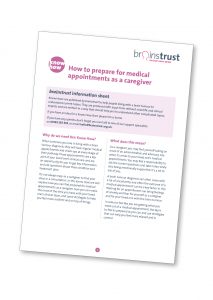 How to prepare for medical appointments as a caregiver
How to prepare for medical appointments as a caregiver
When someone you love is living with a brain tumour diagnosis, they will have regular medical appointments and check-ups at each stage of their pathway. These appointments are a key part of your loved one’s clinical care and are an opportunity for you to get key information and ask questions about their condition and treatment plan.
It’s not always easy as a caregiver to find your voice in a consultation. In this Know How, we will explore how you can feel prepared for medical appointments as a caregiver, how you can make the most of the time you have with your loved one’s clinical team, and some strategies to help you feel more resilient and on top of things.
Download the How to prepare for medical appointments as a caregiver Know How
Brain tumour support is driven by your support. We know. Click here to help us do even more for people living with a brain tumour in your area.
Did this information make you feel more resourced, more confident or more in control?
Coaching with brainstrust
Our coaching conversations are about collaboration, we will listen, listen some more, then ask questions. Our support specialists are trained to help you realise what matters most to you and come up with a plan to reach your specific goals.
With coaching we can help you make sure you know your priorities so that you can be there for yourself and your loved one.
